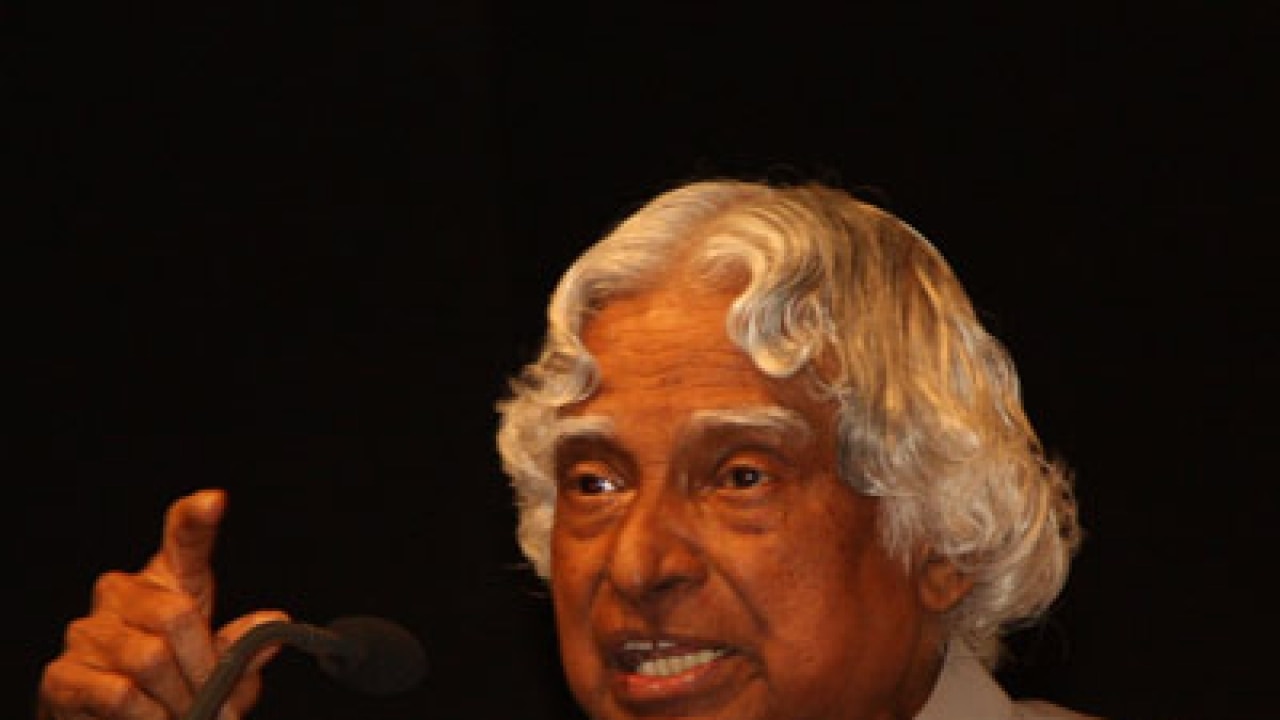
In some ways Dr. APJ Abdul Kalam was the closest thing we had to a desi Tony Stark in real life – a rocket scientist, genius, teacher and visionary (which is more appealing to Indians than playboy-like behaviour).
Unlike Stark, who was an alcoholic womaniser, Kalam lived as a frugal, vegetarian teetotaller and called himself "a brahmachari President".
When BJP president Amit Shah described Dr. APJ Abdul Kalam as the “best exemplar” of the idea of India, he wasn’t exaggerating. A boy from an impoverished background who would go on to become scientist and then president, a man so humble that his rise to the highest post in the land didn’t change his demeanour at all, he was the embodiment of the ‘Indian Dream’.
It helped that he was a Muslim who was a staunch patriot, a rocket scientist (helping improve India’s nuclear arsenal against Pakistan) and also loved the Gita and Koran. Combine all the aforementioned qualities and you have the desi version of Friederich Nietzsche’s Ubermensch, a combination of Karna, Drona and Bhisma.
There was an almost superheroic tint to Kalam’s achievements. Quite like Stark, or even Bruce Wayne, who stood tall amongst gods, aliens, super-soldiers and other beings of immense power. Dr. Kalam taught us that inequality or hardships were just hurdles that could be overcome by dint of hard work and intellect.
Very few people manage to transcend petty politics in India, and Dr. APJ Abdul Kalam was one of them. This was evident in the outpouring of grief from people across the political spectrum as they paid their homage to the Missile Man of India.
Abdul Kalam’s scientific achievements
Kalam’s greatest scientific achievement came in 1998 when he played an important role India’s Pokhran-II nuclear tests in 1998, which made the country, the sixth member of the elite nuclear club after the US, USSR, France, China and UK.
While the reactions from the international community, including the US, Pakistan, and China were less than flattering, it showed the world that India would not be cowed down.
Kalam’s work went beyond nuclear weapons. He was involved in the development of ballistic missiles, like Agni and Prithvi. As Chief Executive of DRDO's Guided Missile Development Programme he was heavily involved in the development of India’s first indigenous Satellite Launch Vehicle (SLV –III).
His work in the defence sector would have spin-off benefits for civilians as well. Speaking to The New Indian Express, Dr. L Narendranath of the Nizam’s Institutes of Medical Sciences (NIMS), said: “For me it was decades of cooperation. It began when he opened up defence laboratories for NIMS and other civilians. His idea was that research in defence sector should have spin-off benefits for civilians. Two projects came out of it, one was the cheaper Kalam-Raju cardiac stent and the other was the Light Calliper Project.”
The Light Calliper Project helped scores of people who were fitted with light weight callipers instead of having to lug around heavier ones. The Kalam-Raju stent, created by Dr. Kalam and Dr. B. Soma Raju of the Care Foundation, was made available for only Rs.10,000 in 1998, compared to Rs.70,000 that the imported stents cost at that time. This forced other companies to also bring down their costs.
Another of his achievements included the Kalam-Raju tablet, a tablet computer for healthcare in rural areas. Its aim was to allow doctors, Anganwadi and healthcare workers at the primary level healthcare level to perform certain medical processes in rural areas.
Describing the tablet, Kalam’s co-author of Wings of Fire, Arun Tiwari told The Hindu: “What if an Anganwadi worker or a doctor in a remote and inaccessible village has a tablet that stores medical information and patient's medical history? Villages are far flung, we have limited qualified physicians and there are challenges in logistics. Under such conditions, a rugged tablet computer becomes very essential and logical”
The man with a vision
Above all, Dr. Kalam was a visionary who dreamt of a plan to transform India into a developed nation by 2020 in his book co-authored by Dr. YS Rajan. The book, 2020: A Vision for the New Millenium, focused on how India’s development in four areas—its people, economy, strategic strength and infrastructure—could be achieved by technology.
Above all, Dr. Kalam was a dreamer, a man who believed that India could become a superpower without needing to ape the West or China. It’s up to us now, irrespective of our political leanings and ideologies, to help India achieve that dream.